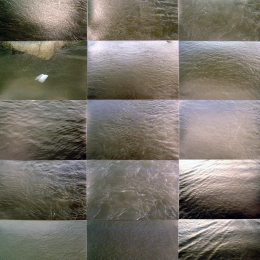art or business
Úgy marad / Temporary
Gabriella Csoszó, Zsolt Fekete, Gábor Arion Kudász, Miklós Surányi, Lenke Szilágyi
kArton Gallery, 6 September – 6 October 2007
Opening: 5 September 7 PM
Opening speech by: Samu Szemerey
Curator: Hajnalka Somogyi,
organiser: Lumen Photography Foundation
The photos of the exhibition show objects and scenery which are not usually captured on camera: a mobile relay antenna, a rusty sign, a littered section of the Danube bank, a suburban airport. These are all things which, on the one hand, we continuously come across, and on the other – or perhaps for that very reason – we feel no urgent need to look at more closely. Traditionally, the public expects photographs to record moments that are distant in time and space, or people and sites that are either interesting by virtue of their unfamiliarity, or dear precisely because of their intimate familiarity. They anticipate the freezing of time, the illusion of permanence, the conservation of that which is important and beautiful. At the same time, photos – especially photo series – are especially suitable for capturing change, for making comparisons, or uncovering details.
The artists presented here take conscious advantage of the above mentioned opportunities when they choose places which reveal the character of the human strivings to interfere with nature. They depict situations where the manifestations of our relationship to nature – be it attraction, respect, or neglect – and the fallible experiments in “inhabiting”, ordering, and shaping it result in a unique mix of transience and permanence, of integration and disharmony. The playful duality of the Hungarian and English title of the exhibition (úgy marad translates into “it will stay that way”) alludes to the fact that things often “stay that way”, though nobody intended them to be permanent, or at least they shouldn’t have been; or, quite to the contrary, they retrievably waste away, run wild, lose their meaning, regardless of how we expected them to be durable and long-lasting.
The featured works could mostly be categorized into the landscape genre, which was originally meant to represent the idyllic, the retreat from society, the forces which move the world, the beauty which comes from god. It is partly because of the boundless encroachment on the part of modern man that the majority of landscape images created by contemporary artists are brought into being and evaluated as a means of critique. Most of the scenes shown in the exhibited photos, such as the airport, the relay antenna, or the railway station, can also be tied to this mobility. The texts written for the pieces by the artists, the perseverant gathering work, the identical method of composition, and the consistent years-long dedication to the task make us realize that all this is personal – it is the manifestation of the artist’s worldview. Thus, in addition to the sensitive, critical, occasionally humorous, reflection on the part of the artists, one more thing is made clear: their photos are not true mirror images of reality, but consciously composed constructions, which leave at least as much room for pondering the photo itself as they do for ruminating about its representation of reality.
Lenke Szilágyi’s stop sign found in the middle of nowhere once indicated a place called Látókép (Peeping Image) It is as if the word written on the rusted, now-functionless sign was urging us to – perhaps with the help of photography – take a closer, more conscious look at our surroundings. In the case of Gábor Arion Kudász’ mobile relay antenna disguised as a pine tree, we are shown examples of supposedly clever solutions for adaptive integration, when mobile communication companies who are otherwise known for altering our environment with strident uninhibitedness adopt the means of mimicry in such a surprising fashion – andwith such dubious results.
The Ikland farm of Zsolt Fekete’s family vanishes to leave those connected to it standing as witnesses in the abandoned lot where the house once was. In contrast, the weekend houses captured by Miklós Surányi are shelters for those migrating to nature. They are examples of incessant DIY home improvements or of forgottenness and slow decay, which, instead of the promise of nomadic freedom bare witness to choosing a static, soil-bound stability. Gabriella Csoszó’s photo installation demonstrates what happens when a great natural element, the Danube, meets a metropolis – a mismatched urban planning solution, which albeit regulates and uses the river, makes a harmonic coexistence impossible. While here we see an abandoned site which is seemingly permanent in its temporariness and which can be called neither natural, nor constructed, Zsolt Fekete’s triptych displayed on the opposite wall depicts a place – an airport – which could be called an architectural object but, in some strange instances, promises the illusionary spectacle of virgin nature.

